Saturn V: The mighty U.S. moon rocket
The Saturn V was an integral part of the Space Race.
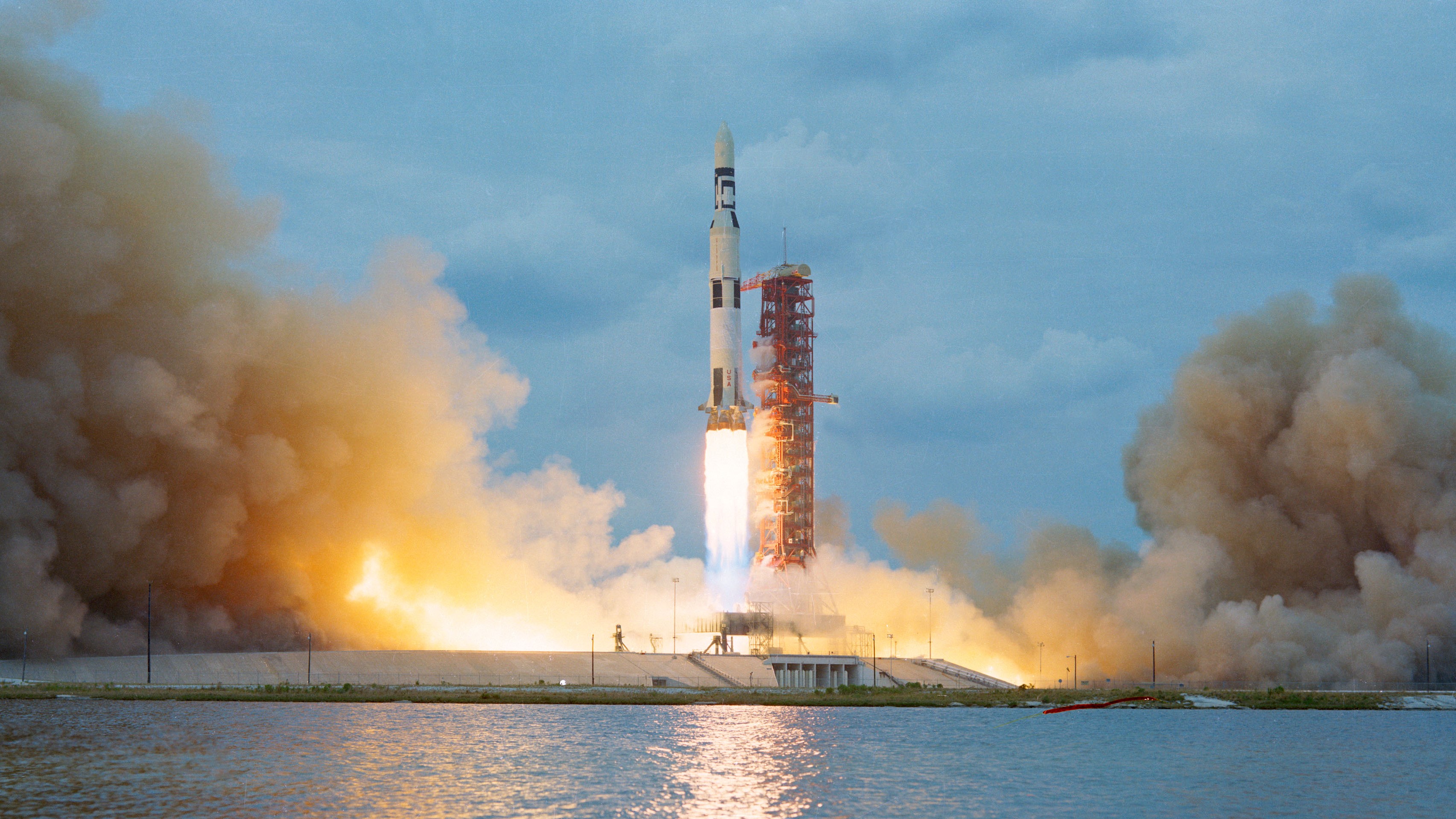
The enormous Saturn V rocket is one of humanity's most impressive and important technological achievements.
In the history of human achievement and scientific progress, few moments are as singularly important as the first time we set foot on the moon. And powering the Apollo missions, including Apollo 11 the one that carried Neil Armstrong, Edwin "Buzz" Aldrin, and Michael Collins to the lunar surface in July 1969, was the Saturn V rocket.
The Saturn V, pronounced Saturn five, was a heavy lift vehicle that was at the time the most powerful rocket ever to successfully take flight. Not only would this stunning piece of human engineering carry humanity to the moon, but it would also facilitate the placement of Skylab, the first space station launched by the U.S., into low-earth orbit.
These rockets, therefore, became a crucially important factor in humanity's quest to explore space and learn more about our own planet.
Related: Apollo landing sites: An observer's guide on how to spot them on the moon
How tall was the Saturn V?
The design of the Saturn V was overseen by German-American aerospace engineer Werner Von Braun as he served as director of NASA's Marshall Space Flight Center in Huntsville.
Standing at 363 feet tall (111 meters), around the height of a 36-story-building and nearly 60 feet (18 m) taller than the Statue of Liberty, the Saturn V was a truly imposing rocket, according to NASA.
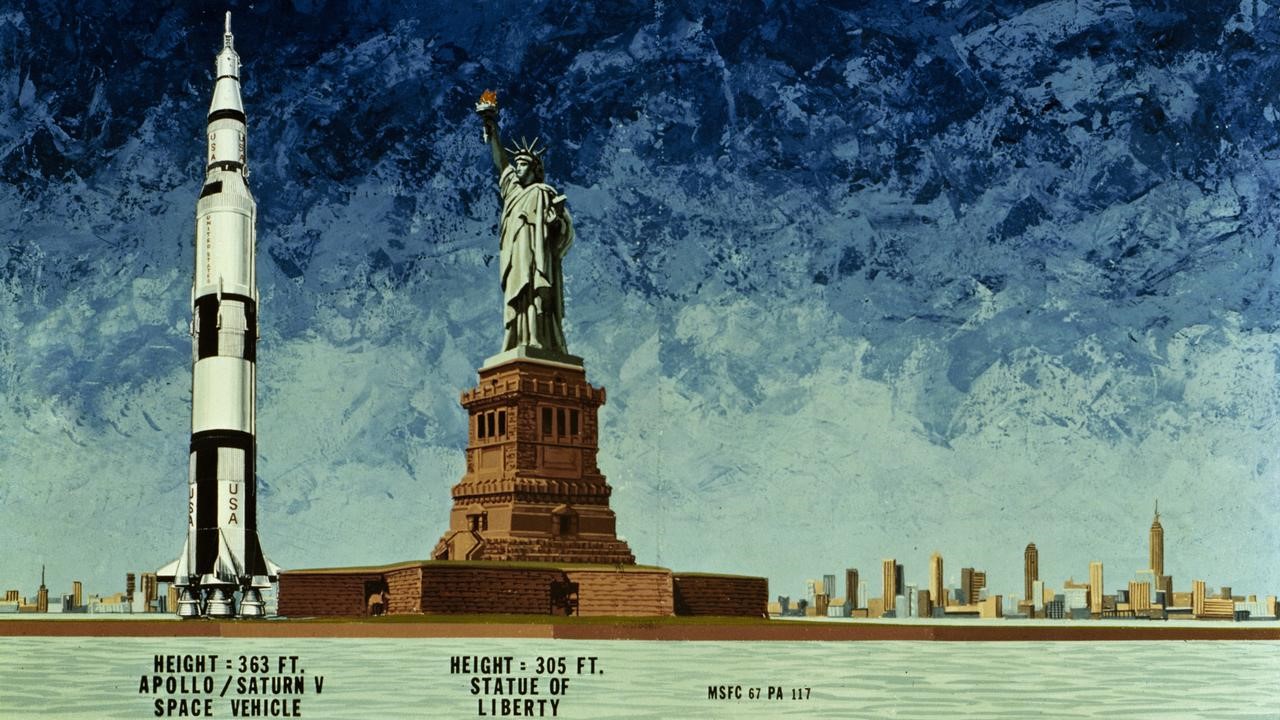
In fact, the initial design of NASA's Space Launch System (SLS), soon to launch as part of the Artemis mission is dwarfed by the Saturn V, which stands at a hardly diminutive height of 322 feet (98.1 m), according to a NASA SLS factsheet.
The Saturn V was also a giant in other ways. The rocket put the "heavy" into "heavy-lift vehicle."
The Saturn V weighed a staggering 6.2 million pounds — about equivalent to a herd of 400 elephants — when fully fueled, with the first stage alone holding 203,400 gallons (770,000 liters) of kerosene fuel and 318,000 gallons (1.2 million liters) of liquid oxygen.
Getting the Saturn V off the ground and away from the surface of Earth was no mean feat. Fortunately, the Saturn V engines had the goods to back up the rocket's tremendous size.
Saturn V rocket engines: How powerful were they?
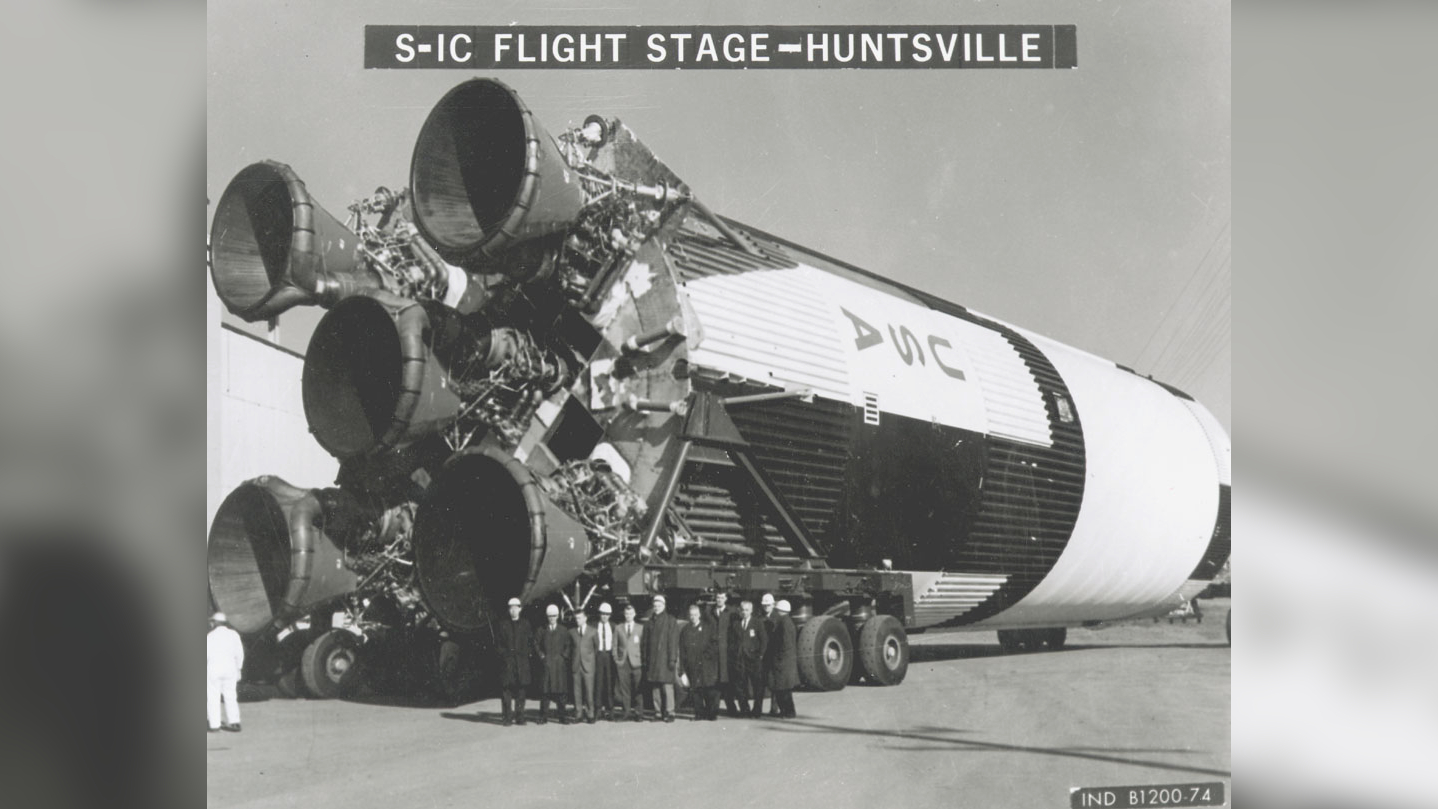
To get the Saturn V into orbit and carry humanity to the surface of the moon, the five engines of the first two stages of the rocket used liquid hydrogen fuel to blast off with 34.5 million newtons or 7.6 million pounds of thrust,
NASA puts this into perspective by pointing out that this is more power than could be generated by 85 Hoover Dams. The agency adds that a car that can get 30 miles to the gallon could drive around the globe about 800 times before it ran out of fuel if it could carry the same amount used to launch the Saturn V.
The engines of the Saturn V could carry a payload weighing as much as 130 tons into orbit around the Earth, according to NASA. That's about the weight of 10 school buses or an entire adult blue whale. The rocket was also capable of delivering 50 tons to the surface of the moon, the equivalent of four school buses, five T-Rexes, or almost nine elephants.
Unsurprisingly, the Saturn V's most powerful engines belonged to its first stage as was the stage of the rocket that was tasked with lifting the tremendous mass of a fully fueled rocket away from Earth.
This is one area in which NASA's SLS rocket will up the ante on the Saturn V. In its initial configuration the SLS will launch with 8.8 million pounds of thrust, 15 percent more than the Saturn V.
This will allow the SLS to send 27 tons of payload to the moon's surface. And the following configurations will be even more powerful, capable of carrying even greater payloads to the moon which will be needed for longer more sustainable space missions.
Saturn V rocket launches: How many flew?
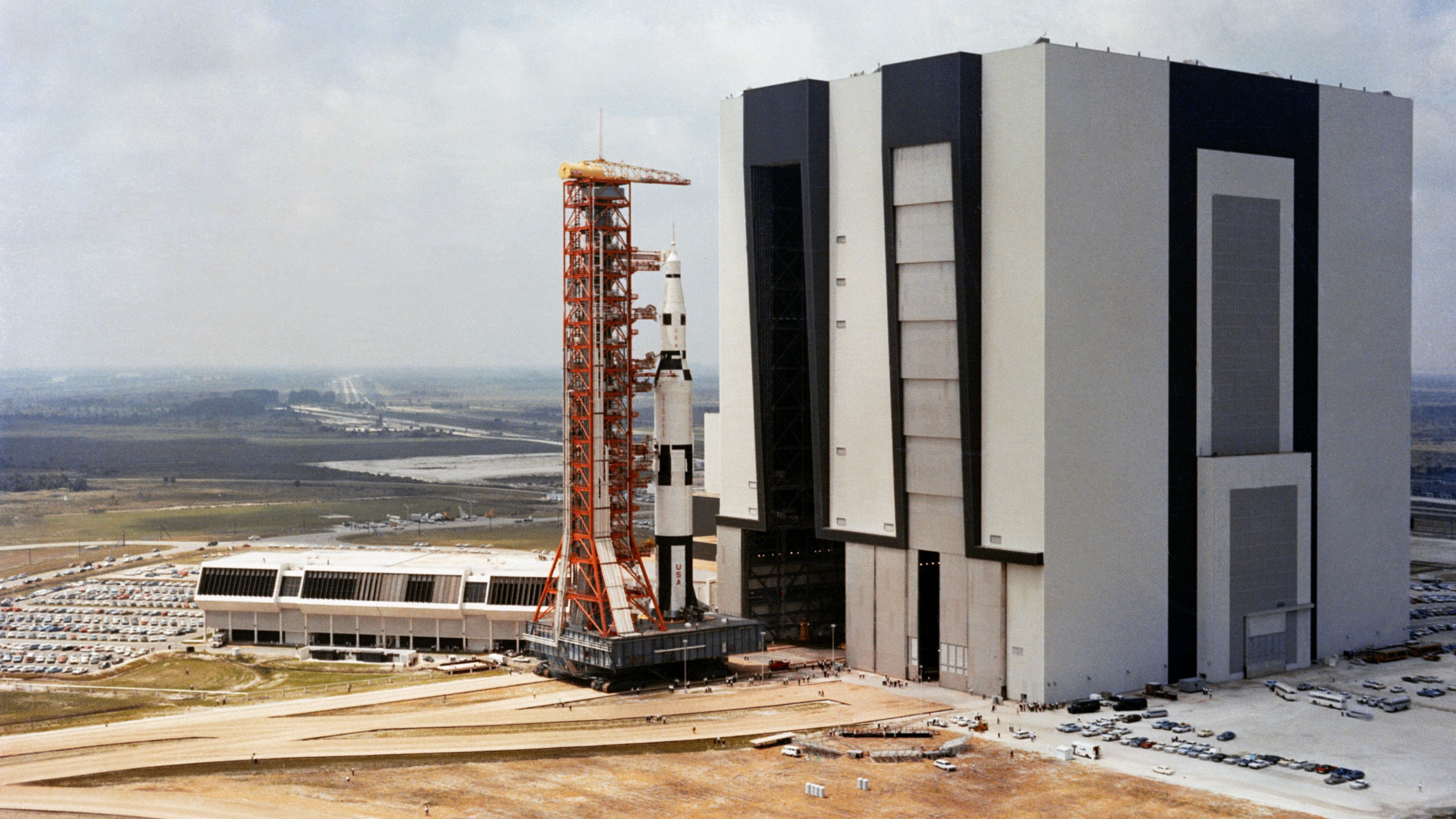
Developed at NASA's Marshall Space Flight Center in Huntsville, Alabama, the Saturn V rocket was the largest of three types of Saturn rockets built by NASA. The smaller Saturn I and Saturn IB were used to carry a crew into orbit around the planet, while the Saturn V would carry humanity beyond orbit and to the surface of the moon.
The first two Saturn V launches, Apollo 4 and Apollo 6 occurred in 1967 and 1968 respectively. Neither of these missions carried a crew and served as tests of the powerful rocket.
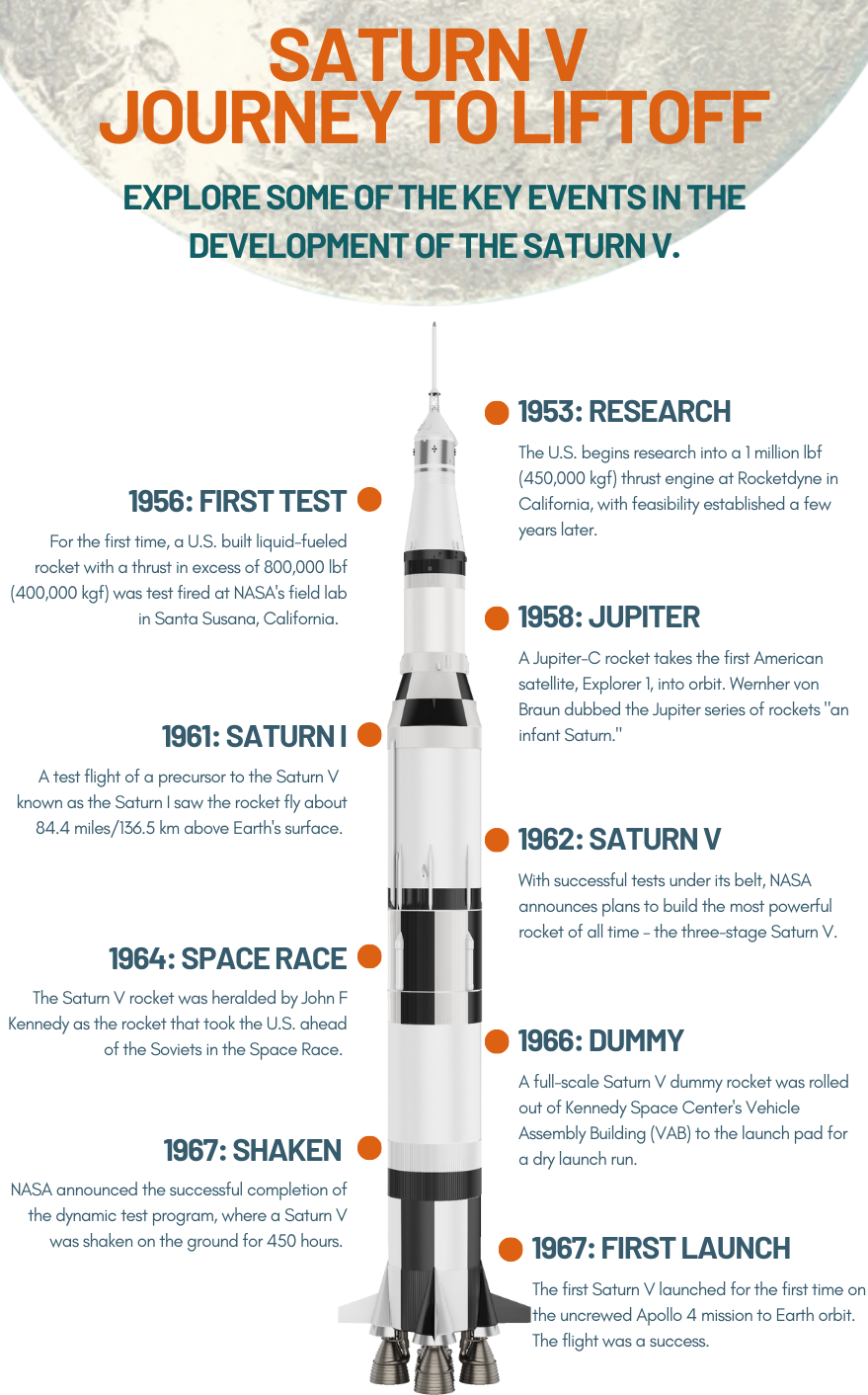
The Apollo 8 Saturn V, launched in December 1968 was the first Saturn V mission to carry a crew to space. It was also the second crewed Apollo mission after Apollo 1 — an ill-fated mission that never flew after a cabin fire killed the crew and destroyed its craft.
The Apollo 8 team of Frank Borman, Jim Lovell and Bill Anders would orbit the moon without landing on the lunar surface with progress towards the moon landing continuing with Apollo missions 9 and 10, both carried by Saturn V rockets.
Apollo 9 would see the crew test the Apollo moon lander by flying it in Earth orbit without landing. Apollo 10 would take a step further, with the Saturn V testing the lander deeper in space but still not landing on the moon.
This giant leap for mankind would finally occur in July 1969 when a Saturn V carried the Apollo 11 mission and the lunar lander to the lunar surface.
Saturn V rockets would continue to lift the crews of Apollo missions to the moon with Apollo 12, 14, 15, 16, and 17 journeying to the lunar surface. The infamous Apollo 13 mission would see a Saturn V rocket carry a crew to space who would be unable to land on the moon as a result of problems with the Apollo spacecraft.
The final Saturn V mission would blast off in 1973, carrying the Skylab space station to orbit around the planet, according to the NASA History Office.
All the Apollo mission Saturn V rockets blasted off from the historic Launch Complex 39 at the John F. Kennedy Space Center in Florida. Both Launch Complex 39 pads, launch pads A and B are still hosting rocket launches today.
Not only does the launch complex see numerous SpaceX launches, but in the near future NASA's SLS will kick start the Artemis mission from Launch Complex 39B, with the mission set to eventually carry humanity back to the moon, landing the first woman and person of color on the lunar surface.
Saturn V rocket stages explained
During the Saturn V launches, each of the rocket's three stages would burn its engines until its fuel was exhausted. At this point, the used stage would separate from the rocket and fall to Earth while the engines of the next stage would take over with the process repeating itself.
For the first stage, this cut-off would usually occur at an altitude of around 42 miles. This would take just around 2 minutes and 47 seconds, according to NASA.
From there the second stage would take over carrying the Saturn V very close to orbit, remaining in operation for around 9 minutes and 9 seconds. The third stage would then fire twice, once for 60 to 90 seconds, then for around five minutes. The first burn would place the Apollo craft into orbit and the final burn would then provide the final thrust needed to take it to the moon.
The fate of this third stage would be slightly different than its predecessors. Rather than falling back to Earth after separation and landing in the ocean, the third stage would either be left to drift in space or would itself hit the lunar surface. NASA researchers would use this to test moonquakes on Earth's natural satellite.
The Saturn V rocket that hoisted Skylab into space differed from the rockets used in the Apollo jaunts as the rocket that took that final flight was comprised of just two stages rather than three.
Own your own Saturn V rocket
Of the 13 Saturn V rockets that launched between 1967 and 1972, just one remains in the United States, exhibited at the Kennedy Space Center Visitor Complex, according to the Kennedy Space Center.
Here, not only can space enthusiasts get a look at one of the most important and historic technological achievements made by mankind, they can learn about the rocket's assembly and the 400,000 or so people that made it possible.
There are also two other Saturn V rockets on display in the U.S. but these are comprised of test materials and never actually launched.
There are options available for those that want the thrill of building a little piece of history for themselves.
In October 2020 Lego released a 3-ft-tall (1 m), NASA Apollo Saturn V model packed with authentic details such as a three-stage design, a launch escape system, a command and service module along with the Lunar Lander and Lunar Orbiter to recreate a rocket launch and splashdown landings.
The set even includes 2 astronaut figures for those seeking to role-play the moon landings. One pleasing detail of the set is that it consists of exactly 1969 pieces.
For people wanting to display the Saturn V without the thrill of putting it together, Estes offer a 1:200 scale "Ready to Fly" model of the historic rocket released in 2019 to celebrate the 50th anniversary of the moon landing.
As well as being suitable to display, the model allows space fans to stage a more practical recreation of a rocket launch by adding C6–3 or C5–3 engines, flame-resistant recovery wadding, and a porta-pad launch base and electron beam controller.
Additional resources
Read the story of the first Saturn V rollout which happened in May 1966. 55 Years Ago. Continuing the legacy of the Apollo mission, Artemis will soon launch from the same historic site that saw the launch of the Saturn V missions. Learn about the future of crewed space exploration with NASA's in-depth lunar exploration program overview.
Bibliography
Apollo 11 Mission Overview, NASA.
Belew. L. F., George C. Marshall Space Flight Center., SKYLAB, Our First Space Station, NASA History Office
What Was the Saturn V?, NASA [available online].
Space Launch System, NASA exploration systems.
Race to the Moon, Saturn V Rocket, Kennedy Space Center attractions.
Lego NASA Apollo Saturn V rocket, science building kit, LEGO.
Saturn V (1:200 Scale) Ready To Fly, Estes.
Howell. E., Apollo 8: First Around the Moon, Space.com.
Saturn V at George W.S. Abbey Rocket Park, Space Center Houston.
Join our Space Forums to keep talking space on the latest missions, night sky and more! And if you have a news tip, correction or comment, let us know at: community@space.com.
Get the Space.com Newsletter
Breaking space news, the latest updates on rocket launches, skywatching events and more!

Robert Lea is a science journalist in the U.K. whose articles have been published in Physics World, New Scientist, Astronomy Magazine, All About Space, Newsweek and ZME Science. He also writes about science communication for Elsevier and the European Journal of Physics. Rob holds a bachelor of science degree in physics and astronomy from the U.K.’s Open University. Follow him on Twitter @sciencef1rst.
- Daisy DobrijevicReference Editor










